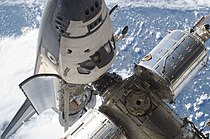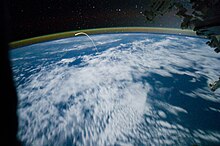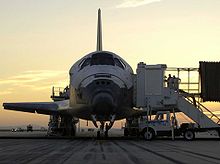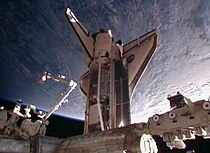- Home
- About Us
- Air Ambulance
- Charter flights
- Special Services
- Visual Tour
- On line
- Partners
- Flying Card
- News
- HR dept
- Follow us
- Contact Us

Welcome You to Department Of Space
Spacecraft
Air Ambulance Aviation the ray of human , for you all needs of human desires space traveling people , Air Ambulance Aviation a part of the Charter flights Aviation , provides spacecraft ranging for the purpose of designed for spaceflight. Spacecraft are used for a variety of purposes, including communications, earth observation, meteorology, navigation, planetary exploration and transportation of humans and cargo. corporate, group travelers and individuals to any destination in the space.
Air Ambulance Aviation and Charter Flights Aviation unmatched with its access to nearly 800 aircraft in world , many more for international destinations with logistics back -up from its over 400 offices and over 1450 highly-skilled professionals spread across the world . We have offices in all over the world,


Choose your Space travel from us , we fly with your style , be one day the king of the world fly like your on way , Get greeting from our caption , yes this is your world , only you are the boss , let we create let we create your kingdon on earth, we are there sir, lets chose ur paradase
Space travel , Space The Ray of Human
What is Space travelWelcome to SpaceTrave, here you will find news and information about space travel, as well as space travel history. You will also find here various articles and documents on astronomy, planets and stars as well as a handy space encyclopedia listing some common astronomical and space travel terminology. More recent technologies regarding space travel, that we hope to explore at spacetravel, include deep space probes, ion drives to propel modern craft through space, and the very new space tourism. The history of space travel really begins with the history of flight, from hot air balloons through heavier than air craft, jets and rockets until we find the human race exploring space. traveling with you • The amount and nature of cargo/baggage • Your budget • The destination • Your aircraft preferences
Our serves space travel, space craft, space flights, apace rescue ,
space distaster managemnets, The Space Shuttle was a manned orbital rocket and spacecraft system operated by world wideon 135 missions from 1981 to 2011. The system combined rocket launch, orbital spacecraft, and re-entry spaceplane with modular add-ons. Major missions included launching numerous satellites and interplanetary probes, conducting space science experiments, and 37 missions constructing and servicing the International Space Station. A major international contribution was the Spacelab payload suite,
processs involved in space travel
Pitcher of the space craft, and discriptions
simply this craft Details of the space travel
Space Crafts Details
what is space craft , the craft who goes to spce for varrious reson like the all the needs of the space
what are the use of space craft , all kind of usage of , explore, research, and space touring
the use of space crafts

The Space Shuttle was a manned orbital rocket and spacecraft system operated on 135 missions from 1981 to 2011. The system combined rocket launch, orbital spacecraft, and re-entry spaceplane with modular add-ons. Major missions included launching numerous satellites and interplanetary probes,[2] conducting space science experiments, and 37 missions constructing and servicing the International Space Station. A major international contribution was the Spacelab payload suite,
Major components included the orbiters, recoverable boosters, external tanks, payloads, and supporting infrastructure.
Space Craft Launching
All Space Shuttle missions were launched from Kennedy Space Center (KSC). The weather criteria used for launch included, but were not limited to: precipitation, temperatures, cloud cover, lightning forecast, wind, and humidity.[49] The Shuttle was not launched under conditions where it could have been struck by lightning. Aircraft are often struck by lightning with no adverse effects because the electricity of the strike is dissipated through its conductive structure and the aircraft is not electrically grounded. Like most jet airliners, the Shuttle was mainly constructed of conductive aluminum, which would normally shield and protect the internal systems. However, upon liftoff the Shuttle sent out a long exhaust plume as it ascended, and this plume could have triggered lightning by providing a current path to ground. The NASA Anvil Rule for a Shuttle launch stated that an anvil cloud could not appear within a distance of 10nautical miles.[50] The Shuttle Launch Weather Officer monitored conditions until the final decision to scrub a launch was announced. In addition, the weather conditions had to be acceptable at one of the Transatlantic Abort Landing sites (one of several Space Shuttle abort modes) to launch as well as the solid rocket booster recovery area.[49][51] While the Shuttle might have safely endured a lightning strike, a similar strike caused problems on Apollo 12, so for safety NASAchose not to launch the Shuttle if lightning was possible (NPR8715.5).
Historically, the Shuttle was not launched if its flight would run from December to January (a year-end rollover or YERO). Its flight software, designed in the 1970s, was not designed for this, and would require the orbiter's computers be reset through a change of year, which could cause a glitch while in orbit. In 2007, NASA engineers devised a solution so Shuttle flights could cross the year-end boundary.[52]
On the day of a launch, after the final hold in the countdown at T-minus 9 minutes, the Shuttle went through its final preparations for launch, and the countdown was automatically controlled by the Ground Launch Sequencer (GLS), software at the Launch Control Center, which stopped the count if it sensed a critical problem with any of the Shuttle's onboard systems. The GLS handed off the count to the Shuttle's on-board computers at T minus 31 seconds, in a process called auto sequence start.
At T-minus 16 seconds, the massive sound suppression system (SPS) began to drench the Mobile Launcher Platform (MLP) and SRB trenches with 350,000 US gallons (1,300 m3) of water to protect the Orbiter from damage by acoustical energy and rocket exhaust reflected from the flame trench and MLP during lift off (NASA article).[53]
At T-minus 10 seconds, hydrogen igniters were activated under each engine bell to quell the stagnant gas inside the cones before ignition. Failure to burn these gases could trip the onboard sensors and create the possibility of an overpressure and explosion of the vehicle during the firing phase. The main engine turbopumps also began charging the combustion chambers with liquid hydrogen and liquid oxygen at this time. The computers reciprocated this action by allowing the redundant computer systems to begin the firing phase.
The three main engines (SSMEs) started at T-minus 6.6 seconds. The main engines ignited sequentially via the Shuttle's general purpose computers (GPCs) at 120 millisecond intervals. The GPCs required that the engines reach 90 percent of their rated performance to complete the final gimbal of the main engine nozzles to liftoff configuration.[54] When the SSMEs started, water from the sound suppression system flashed into a large volume of steam that shot southward. All three SSMEs had to reach the required 100 percent thrust within three seconds, otherwise the onboard computers would initiate an RSLS abort. If the onboard computers verified normal thrust buildup, at T minus 0 seconds, the 8 pyrotechnic nuts holding the vehicle to the pad were detonated and theSRBs were ignited. At this point the vehicle was committed to liftoff, as the SRBs could not be turned off once ignited.[55] The plume from the solid rockets exited the flame trench in a northward direction at near the speed of sound, often causing a rippling of shockwaves along the actual flame and smoke contrails. At ignition, the GPCs mandated the firing sequences via the Master Events Controller, a computer program integrated with the Shuttle's four redundant computer systems. There were extensive emergency procedures (abort modes) to handle various failure scenarios during ascent. Many of these concerned SSME failures, since that was the most complex and highly stressed component. After the Challenger disaster, there were extensive upgrades to the abort modes.
After the main engines started, but while the solid rocket boosters were still bolted to the pad, the offset thrust from the Shuttle's three main engines caused the entire launch stack (boosters, tank and Shuttle) to pitch down about 2 m at cockpit level. This motion was called the "nod", or "twang" in NASA jargon. As the boosters flexed back into their original shape, the launch stack pitched slowly back upright. This took approximately six seconds. At the point when it was perfectly vertical, the boosters ignited and the launch commenced. The Johnson Space Center's Mission Control Center assumed control of the flight once the SRBs had cleared the launch tower.
Shortly after clearing the tower, the Shuttle began a combined roll, pitch and yaw maneuver that positioned the orbiter head down, with wings level and aligned with the launch pad. The Shuttle flew upside down during the ascent phase. This orientation allowed a trim angle of attack that was favorable for aerodynamic loads during the region of high dynamic pressure, resulting in a net positive load factor, as well as providing the flight crew with use of the ground as a visual reference. The vehicle climbed in a progressively flattening arc, accelerating as the weight of the SRBs and main tank decreased. To achieve low orbit requires much more horizontal than vertical acceleration. This was not visually obvious, since the vehicle rose vertically and was out of sight for most of the horizontal acceleration. The near circular orbital velocity at the 380 kilometers (236 mi) altitude of the International Space Station is 7.68 kilometers per second 27,650 km/h (17,180 mph), roughly equivalent to Mach 23 at sea level. As the International Space Station orbits at an inclination of 51.6 degrees, the Shuttle had to set its inclination to the same value to rendezvous with the station.
Around a point called Max Q, where the aerodynamic forces are at their maximum, the main engines were temporarily throttled back to 72 percent to avoid over-speeding and hence overstressing the Shuttle, particularly in vulnerable areas such as the wings. At this point, a phenomenon known as the Prandtl-Glauert singularity occurred, where condensation clouds formed during the vehicle's transition to supersonic speed. At T+70 seconds, the main engines throttled up to their maximum cruise thrust of 104% rated thrust.
Space walk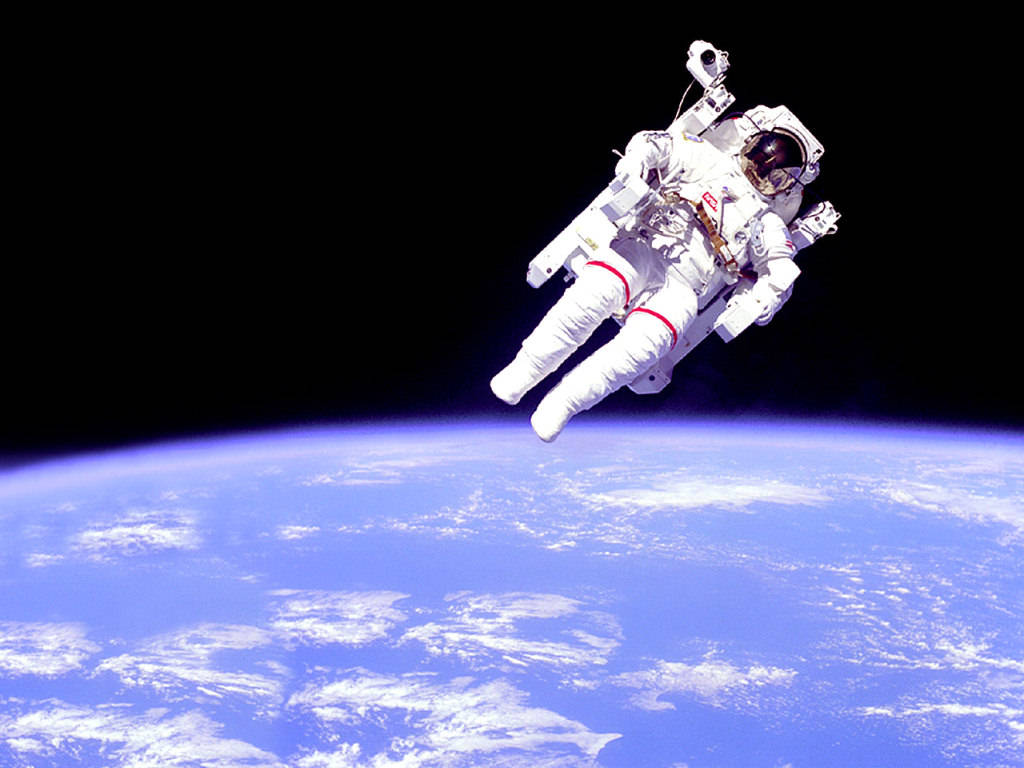
At T+126 seconds after launch, explosive bolts released the SRBs and small separation rockets pushed them laterally away from the vehicle. The SRBs parachuted back to the ocean to be reused. The Shuttle then began accelerating to orbit on the main engines. The vehicle at that point in the flight had a thrust-to-weight ratio of less than one – the main engines actually had insufficient thrust to exceed the force of gravity, and the vertical speed given to it by the SRBs temporarily decreased. However, as the burn continued, the weight of the propellant decreased and the thrust-to-weight ratio exceeded 1 again and the ever-lighter vehicle then continued to accelerate towards orbit.
The vehicle continued to climb and take on a somewhat nose-up angle to the horizon – it used the main engines to gain and then maintain altitude while it accelerated horizontally towards orbit. At about five and three-quarter minutes into ascent, the orbiter's direct communication links with the ground began to fade, at which point it rolled heads up to reroute its communication links to the Tracking and Data Relay Satellite system.
Finally, in the last tens of seconds of the main engine burn, the mass of the vehicle was low enough that the engines had to be throttled back to limit vehicle acceleration to 3 g (29.34 m/s²), largely for astronaut comfort. At approximately eight minutes post launch, the main engines were shut down.
The main engines were shut down before complete depletion of propellant, as running dry would have destroyed the engines. The oxygen supply was terminated before the hydrogen supply, as the SSMEs reacted unfavorably to other shutdown modes. (Liquid oxygen has a tendency to react violently, and supports combustion when it encounters hot engine metal.) The external tank was released by firing explosive bolts, largely burning up in the atmosphere, though some fragments fell into the ocean, in either the Indian Ocean or the Pacific Ocean depending on launch profile.[45] The sealing action of the tank plumbing and lack of pressure relief systems on the external tank helped it break up in the lower atmosphere. After the foam burned away during re-entry, the heat caused a pressure buildup in the remaining liquid oxygen and hydrogen until the tank exploded. This ensured that any pieces that fell back to Earth were small.
To prevent the Shuttle from following the external tank back into the lower atmosphere, the Orbital maneuvering system (OMS) engines were fired to raise the perigee higher into the upper atmosphere. On some missions (e.g., missions to the ISS), the OMS engines were also used while the main engines were still firing. The reason for putting the orbiter on a path that brought it back to Earth was not just for external tank disposal but also one of safety: if the OMS malfunctioned, or the cargo bay doors could not open for some reason, the Shuttle was already on a path to return to earth for an emergency abort landing.
[edit]Ascent tracking
The Shuttle was monitored throughout its ascent for short range tracking (10 seconds before liftoff through 57 seconds after), medium range (7 seconds before liftoff through 110 seconds after) and long range (7 seconds before liftoff through 165 seconds after). Short range cameras included 22 16mm cameras on the Mobile Launch Platform and 8 16mm on the Fixed Service Structure, 4 high speed fixed cameras located on the perimeter of the launch complex plus and additional 42 fixed cameras with 16mm motion picture film. Medium range cameras included remotely operated tracking cameras at the launch complex plus 6 sites along the immediate coast north and south of the launch pad, each with 800mm lens and high speed cameras running 100 feet per second. These cameras ran for only 4–10 seconds due to limitations in the amount of film available. Long range cameras included those mounted on the External Tank, SRBs and orbiter itself which streamed live video back to the ground providing valuable information about any debris falling during ascent. Long range tracking cameras with 400-inch film and 200-inch video lenses were operated by a photographer at Playalinda Beach as well as 9 other sites from 38 miles north at the Ponce Inlet to 23 miles south to Patrick Air Force Base (PAFB) and additional mobile optical tracking camera was stationed on Merritt Island during launches. A total of 10 HD cameras were used both for ascent information for engineers and broadcast feeds to networks such as NASA TV and HDNet The number of cameras significantly increased and numerous existing cameras were upgraded at the recommendation of the Columbia Accident Investigation Board to provide better information about the debris during launch. Debris was also tracked using a pair of Weibel Continuous Pulse Doppler X-band radars, one on board the SRB recovery ship MV Liberty Star positioned north east of the launch pad and on a ship positioned south of the launch pad. Additionally, during the first 2 flights following the loss of Columbia and her crew, a pair of NASA WB-57 reconnaissance aircraft equipped with HD Video and Infrared flew at 60,000 feet (18,000 m) to provide additional views of the launch ascent.[56] Kennedy Space Center also invested nearly $3 million in improvements to the digital video analysis systems in support of debris tracking.[57]
In orbit
Once in orbit, the Shuttle usually flew at an altitude of 200 miles (321.9 km), and occasionally as high as 400 miles.[58] In the 1980s and 1990s, many flights involved space science missions on the NASA/ESA Spacelab, or launching various types of satellites and science probes. By the 1990s and 2000s the focus shifted more to servicing the space station, with fewer satellite launches. Most missions involved staying in orbit several days to two weeks, although longer missions were possible with the Extended Duration Orbiter add-on or when attached to a space station.
Re-entry and landing
| This section needs additional citations for verification. Please help improve this article by adding citations toreliable sources. Unsourced material may be challenged and removed. (June 2007) |
Almost the entire Space Shuttle re-entry procedure, except for lowering the landing gear and deploying the air data probes, were normally performed under computer control. However, the re-entry could be flown entirely manually if an emergency arose. The approach and landing phase could be controlled by the autopilot, but was usually hand flown.
The vehicle began re-entry by firing the Orbital maneuvering system engines, while flying upside down, backside first, in the opposite direction to orbital motion for approximately three minutes, which reduced the Shuttle's velocity by about 200 mph (322 km/h). The resultant slowing of the Shuttle lowered its orbitalperigee down into the upper atmosphere. The Shuttle then flipped over, by pushing its nose down (which was actually "up" relative to the Earth, because it was flying upside down). This OMS firing was done roughly halfway around the globe from the landing site.
The vehicle started encountering more significant air density in the lower thermosphere at about 400,000 ft (120 km), at around Mach 25, 8,200 m/s (30,000 km/h; 18,000 mph). The vehicle was controlled by a combination of RCS thrusters and control surfaces, to fly at a 40 degree nose-up attitude, producing high drag, not only to slow it down to landing speed, but also to reduce reentry heating. As the vehicle encountered progressively denser air, it began a gradual transition from spacecraft to aircraft. In a straight line, its 40 degree nose-up attitude would cause the descent angle to flatten-out, or even rise. The vehicle therefore performed a series of four steep S-shaped banking turns, each lasting several minutes, at up to 70 degrees of bank, while still maintaining the 40 degree angle of attack. In this way it dissipated speed sideways rather than upwards. This occurred during the 'hottest' phase of re-entry, when the heat-shield glowed red and the G-forces were at their highest. By the end of the last turn, the transition to aircraft was almost complete. The vehicle leveled its wings, lowered its nose into a shallow dive and began its approach to the landing site.
-
Simulation of the outside of the Shuttle as it heats up to over 1,500 °C during re-entry.
-
A Space Shuttle model undergoes a wind tunneltest in 1975. This test is simulating the ionized gasses that surround a Shuttle as it reenters the atmosphere.
The orbiter's maximum glide ratio/lift-to-drag ratio varies considerably with speed, ranging from 1:1 at hypersonic speeds, 2:1 at supersonic speeds and reaching 4.5:1 at subsonic speeds during approach and landing.[59]
In the lower atmosphere, the orbiter flies much like a conventional glider, except for a much higher descent rate, over 50 m/s (180 km/h; 110 mph)(9800fpm). At approximately Mach 3, two air data probes, located on the left and right sides of the orbiter's forward lower fuselage, are deployed to sense air pressure related to the vehicle's movement in the atmosphere.
[edit]Final approach and landing phase
When the approach and landing phase began, the orbiter was at a 3,000 m (9,800 ft) altitude, 12 km (7.5 mi) from the runway. The pilots applied aerodynamic braking to help slow down the vehicle. The orbiter's speed was reduced from 682 to 346 km/h (424 to 215 mph), approximately, at touch-down (compared to 260 km/h (160 mph) for a jet airliner). The landing gear was deployed while the Orbiter was flying at 430 km/h (270 mph). To assist the speed brakes, a 12 m (39 ft) drag chute was deployed either after main gear or nose gear touchdown (depending on selected chute deploy mode) at about 343 km/h (213 mph). The chute was jettisoned once the orbiter slowed to 110 km/h (68.4 mph).
-
Endeavour brake chute deploys after touching down
![]() Media related to Landings of space Shuttles at Wikimedia Commons
Media related to Landings of space Shuttles at Wikimedia Commons
[edit]Post-landing processing
After landing, the vehicle stayed on the runway for several minutes for the orbiter to cool. Teams at the front and rear of the orbiter tested for presence ofhydrogen, hydrazine, monomethylhydrazine, nitrogen tetroxide and ammonia (fuels and by products of the control and the orbiter's three APUs). If hydrogen was detected, an emergency would be declared, the orbiter powered down and teams would evacuate the area. A convoy of 25 specially-designed vehicles and 150 trained engineers and technicians approached the orbiter. Purge and vent lines were attached to remove toxic gasses from fuel lines and the cargo bay about 45–60 minutes after landing. A flight surgeon boarded the orbiter for initial medical checks of the crew before disembarking. Once the crew left the orbiter, responsibility for the vehicle was handed from the Johnson Space Center back to the Kennedy Space Center[60]
If the mission ended at Edwards Air Force Base in California, White Sands Space Harbor in New Mexico, or any of the runways the orbiter might use in an emergency, the orbiter was loaded atop the Shuttle Carrier Aircraft, a modified 747, for transport back to the Kennedy Space Center, landing at the Shuttle Landing Facility. Once at the Shuttle Landing Facility, the orbiter was then towed 2 miles (3.2 km) along a tow-way and access roads normally used by tour busses and KSC employees to the Orbiter Processing Facility where it began a months-long preparation process for the next mission.[60]
[edit]Landing sites
NASA preferred Space Shuttle landings to be at Kennedy Space Center.[61] If weather conditions made landing there unfavorable, the Shuttle could delay its landing until conditions are favorable, touch down at Edwards Air Force Base, California, or use one of the multiple alternate landing sites around the world. A landing at any site other than Kennedy Space Center meant that after touchdown the Shuttle must be mated to the Shuttle Carrier Aircraft and returned to Cape Canaveral. Space Shuttle Columbia (STS-3) landed at the White Sands Space Harbor, New Mexico; this was viewed as a last resort as NASA scientists believe that the sand could potentially damage the Shuttle's exterior.
There were many alternative landing sites that were never used.[62][63]
Risk contributors
An example of technical risk analysis for a STS mission is SPRA iteration 3.1 top risk contributors for STS-133:[64][65]
- Micro-Meteoroid Orbital Debris (MMOD) strikes
- Space Shuttle Main Engine (SSME)-induced or SSME catastrophic failure
- Ascent debris strikes to TPS leading to LOCV on orbit or entry
- Crew error during entry
- RSRM-induced RSRM catastrophic failure (RSRM are the rocket motors of the Solid Rocket Boosters)
- COPV failure (COPV are tanks inside the orbiter that hold gas at high pressure)
An internal NASA risk assessment study (conducted by the Shuttle Program Safety and Mission Assurance Office at Johnson Space Center) released in late 2010 or early 2011 concluded that the agency had seriously underestimated the level of risk involved in operating the Shuttle. The report assessed that there was a 1 in 9 chance of a catastrophic disaster during the first nine flights of the Shuttle but that safety improvements had later improved the risk ratio to 1 in 100.[66]
Space Shuttle successors and legacy
Until another U.S. launch vehicle is ready, crews will travel to and from the International Space Station aboard Russian Soyuz spacecraft or possibly a future American commercial spacecraft. A planned successor to STS was the "Shuttle II" during the 1980s and 1990s, and later the Constellation program during the 2004–2010 period. CSTS was a proposal to continue to operate STS commercially, after NASA.[85] On September 14, 2011, NASA announced that it had selected the design of a new Space Launch System that it said would take the agency's astronauts farther into space than ever before and provide the cornerstone for future human space exploration efforts by the U.S.[86][87][88]

Below is a list of major events in the Space Shuttle orbiter fleet.
| Date | Orbiter | Major event / remarks |
|---|---|---|
| September 17, 1976 | Enterprise | Prototype Space Shuttle Enterprise was rolled out of its assembly facility in Southern California and displayed before a crowd several thousand strong.[67] |
| February 18, 1977 | Enterprise | First flight; Attached to Shuttle Carrier Aircraft throughout flight. |
| August 12, 1977 | Enterprise | First free flight; Tailcone on; lakebed landing. |
| October 26, 1977 | Enterprise | Final Enterprise free flight; First landing on Edwards AFB concrete runway. |
| April 12, 1981 | Columbia | First Columbia flight, first orbital test flight; STS-1 |
| November 11, 1982 | Columbia | First operational flight of the Space Shuttle, first mission to carry four astronauts; STS-5 |
| April 4, 1983 | Challenger | First Challenger flight; STS-6 |
| August 30, 1984 | Discovery | First Discovery flight; STS-41-D |
| October 3, 1985 | Atlantis | First Atlantis flight; STS-51-J |
| October 30, 1985 | Challenger | First crew of eight astronauts; STS-61-A |
| January 28, 1986 | Challenger | Disaster starting 73 seconds after launch; STS-51-L; all seven crew members died. |
| September 29, 1988 | Discovery | First post-Challenger mission; STS-26 |
| May 4, 1989 | Atlantis | The first Space Shuttle mission to launch a space probe, Magellan; STS-30 |
| April 24, 1990 | Discovery | Launch of the Hubble Space Telescope; STS-31 |
| May 7, 1992 | Endeavour | First Endeavour flight; STS-49 |
| November 19, 1996 | Columbia | Longest Shuttle mission at 17 days, 15 hours; STS-80 |
| December 4, 1998 | Endeavour | First ISS mission; STS-88 |
| February 1, 2003 | Columbia | Disintegrated during re-entry; STS-107; all seven crew members died. |
| July 25, 2005 | Discovery | First post-Columbia mission; STS-114 |
| February 24, 2011 | Discovery | Last Discovery flight; STS-133 |
| May 16, 2011 | Endeavour | Last Endeavour mission; STS-134[68][69] |
| July 8, 2011 | Atlantis | Last Atlantis flight and last Space Shuttle flight; STS-135 |
Sources: NASA launch manifest,[70] NASA Space Shuttle archive[71]
Air Ambulance Aviation
your best friend in space
Email space@airambulance.co.in
Web site www.airambulanceaviation.com
My City Centre
Near Airport Office
My Country
Why Charter Flights Aviation is Better Did You Know?
Best Private Jet Provider


